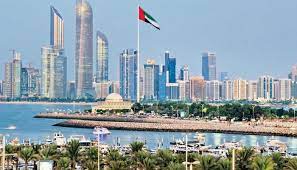
Sign in to your account




Abu Dhabi is the largest emirate in the United Arab Emirates, occupying 84 per cent of the national landmass territory. It has 200 islands and a long coastline stretching 700km. Its total area is 67,340 sq. km.
Abu Dhabi city in the emirate is the federal capital of the UAE.
According to Abu Dhabi Statistics Centre The estimated population of the emirate around mid-2016 was 2,908,173 (comprising 1,857,618 males and 1,050,555 females). 551,535 were UAE nationals and 2,356,638 were expatriates. The average annual population growth rate for the years from 2010 to 2016 was 5.6 per cent.
The emirate of Abu Dhabi lies on the coast of the Arabian Gulf and is bordered by Sultanate of Oman to the east, the Kingdom of Saudi Arabia to the south and the west and the emirate of Dubai to the northeast. The three main regions of the emirate are:
In the eastern region, to the south of Al Ain city is Jebel Hafeet - the emirate's highest peak (1,240 metres).
Al Dhafrah has seven main cities: Liwa, Madinat Zayed, Ghayathi, Ruwais, Mirfa, Sila and Delma Island.
The city of Abu Dhabi is connected to the mainland by four bridges: Maqta bridge, Mussafah bridge, Sheikh Zayed bridge and Sheikh Khalifa bridge.
Abu Dhabi has become a centre for world-class sporting events such as: the Abu Dhabi Golf Championship, the prestigious Abu Dhabi Desert Challenge cross-country rally and the Formula One Abu Dhabi Grand Prix.
In addition, the city will soon house the world's largest concentration of premier cultural institutions which will include the Sheikh Zayed National Museum, the Guggenheim Abu Dhabi and Louvre Abu Dhabi.
Abu Dhabi is rich in natural wonders too. While the emirate's famous Liwa oasis in the south of the emirate is home to some of the largest and most beautiful sand dunes in the world, the garden city of Al Ain in the foothills of Jebel Hafeet is home to several heritage sites.
Enter your Email to get latest news and other post in website